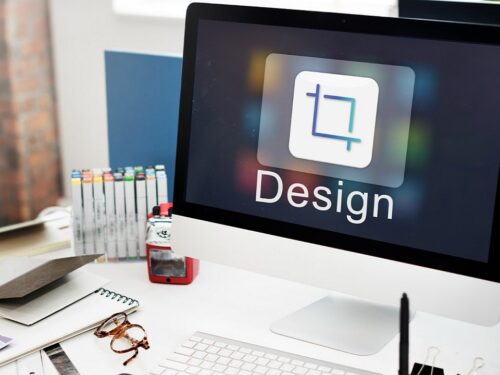Colors have a voice of their own that speaks to us subconsciously, evoking emotions and even possibly memory and guiding decisions without realizing it. The psychology of colors in graphic design discusses how different colors affect perception and behaviour within the context of well-done visual communication: such mutual dependence becomes a necessary aspect of successful visual communication.
In the present-day scene ruled by visual communication, designers should master the question of What graphic design is in itself and how color in graphic design can trigger different moods. Perfect knowledge about color theory, how it stimulates emotion, or its cultural significance can turn to design into a science and an art form.
What Is Graphic Design?
One should define graphic design before entering the premise of color psychology. In essence, graphic design is designing visual content to communicate messages. Graphic design is more about effectively delivering ideas or concepts using various media- images, texts, symbols, or color.
Graphic design can be found everywhere in our lives: branding, packaging, websites, social media, and advertising. And among all these design elements, color dramatically impacts how we decipher and emotionally respond to a design.
This is where the psychology of colors in graphic design becomes so important—it transforms visuals from passive to persuasive.
Psychology is the Study of Human Behavior—And Color Is Key
Psychology is the study of the mind and human behaviour, and with design applied, it generates an interface to establish an emotional experience. In this context, colors are said to be more than a decoration; they serve as psychologists, influencing perception, action, and mood.
The psychology of color reveals that each hue can evoke different emotions. Designers use this knowledge strategically to:
- Influence buying behavior
- Build brand identity
- Establish mood and tone.
- Improve user experience
Understanding Color Theory and the Color Wheel
To apply the psychology of colors in graphic design effectively, one must understand the basics of color theory and the color wheel.
The color wheel is divided into:
- Primary colors: Red, Blue, Yellow
- Secondary colors: Green, Orange, Purple
- Tertiary colors: Mixes of primary and secondary hues
Designers use this framework to build color schemes, including:
- Complementary colors: Opposites on the wheel (e.g., blue and orange)
- Analogous colors: Adjacent on the wheel (e.g., blue, blue-green, green)
- Triadic colors: Equally spaced hues (e.g., red, yellow, blue)
Color harmony is vital to making graphics visually appealing and emotionally effective.
Warm Colors: Red, Orange, and Yellow
In design, red, orange, and yellow are considered warm colors. These colors give off a feeling of energy, urgency, and excitement, which makes them compelling as attention-grabbing components in the design.
- Red: This colour signifies passion, danger, excitement, and urgency. It is the color of choice for many sales, food, and entertainment brands.
- Orange: This color embodies creativity, friendliness, and energy. Youthful-minded or playful brands typically use it.
- Yellow: Yellow inspires both optimism and cheerfulness while being the most eye-catching. The downside is that mainly with yellow, the more it is used, the more tired you get.
In many Western cultures, these hues are associated with warmth and activity, ideal for stimulating emotional reactions.
Cool Colors: Blue and Green
In contrast, blue and green belong to the cool colors family. These colors promote calmness, trust, and balance.
- Blue: Usually associated with and used by the corporate world and tech brands, blue instils trust, loyalty, and professionalism in people’s minds. It occupies the topmost position in the list of the top colors banks, insurance firms, and healthcare providers chosen.
- Green: Generally related to nature growth, healthiness, and peace. A perfect color for eco-friendly, wellness or organic products would be green.
Cool tones offer safety and comfort, supporting long-term brand relationships rather than impulsive action.
Neutral Colors: The Unsung Heroes
While not always the centrepiece, neutral colors play a critical supporting role in design. They bring balance and sophistication, allowing other hues to stand out.
- Black: Portrays refinement, strength, and stateliness.
- White: Represents cleanliness, simplicity, and spaciousness.
- Gray: Neutral and stable colors, best for a professional mood or communicative technology effects.
- Beige/Brown: Earthy colors suggest warmth and naturalism.
Incorporating neutral tones strategically ensures clarity and focus in design layouts.
How Colors Affect Emotion and Behavior
The insides of this device hold different shades for different moods, bringing in human interaction. Each shade creates a different psychological response that marketers and designers use to engage the audience.
Here’s how various colors typically affect emotions:
| Color | Emotional Impact | Common Uses |
| Red | Energy, passion, urgency | Sale banners, fast food |
| Orange | Fun, creativity, youth | Kids’ brands, tech startups |
| Yellow | Happiness, alertness | Warnings, promo signs |
| Blue | Trust, calm, reliability | Finance, Healthcare |
| Green | Growth, balance, freshness | Eco-brands, nutrition |
| Purple | Luxury, spirituality, wisdom | Beauty, premium goods |
| Black | Sophistication, power | Luxury, fashion |
| White | Simplicity, clarity | Minimalist tech products |
| Gray | Neutrality, professionalism | Corporate branding |
Understanding how colors affect the psyche can influence a designer to create a visual that will trigger the intended response, whether trust, excitement, or calmness.
Cultural Backgrounds and Color Perception
Perhaps the most underestimated factor in the psychology of colors in graphic design is cultural context. Colors bring along with them some different meanings from cultural backgrounds; misapprehension can thus damage brand messages.
- In Western cultures, white symbolizes purity, while in some Eastern cultures, it represents mourning.
- Red signifies luck in Chinese culture but can imply danger in others.
- Green, though tied to nature growth in many societies, might have religious significance elsewhere.
Understanding the cultural perspectives of your audience can aid in choosing the colors that complement and do not detract from the brand message.
Color in Graphic Design: More Than Just Aesthetics
Every element of color in graphic design plays a psychological role. It is always psychological. Designers must, therefore, work carefully when choosing palettes to represent their brand personality well while hooking the respective audience. The choice of colors – warm or cool, but mostly between complementary ones-will determines how aesthetically pleasing a design is besides usability and evocation.
Effective use of color contrast can enhance visibility and direct viewership in web and UI design. At the same time, consistency in application reinforces brand recognition and emotional attachment- the entire basis for branding.
In an unspoken language, colors communicate; but using it rightly remains the deftness that separates design from good design.
Why Choose Shag Infotech for Graphic Designing?
Design at Shag Infotech is not just looking good. It’s more than impact; the professional creative team who knows the psychology of colors in graphic design blend the arts and behavioural science to create high-performing visual solutions.
Our expertise in color theory, cultural sensitivity, and emotional targeting is applied during brand launching, campaign designing, or digital makeovers to connect the brand and its audience.
Equipped with state-of-the-art technology, bespoke strategy, and love for creativity, Shag Infotech is your partner for graphic design that speaks, engages, and converts.
Conclusion
The psychology of colors in graphic design functions not only as a visual exercise but it should be viewed as a strategy for shaping perceptions, emotions, and actions. Whereas using primary colors, complementary colors, and combinations from the color wheel all give designers the ability to affect the perception and recall of a brand.
Design is a universal language that incorporates the understanding of the emotional effects of colors dependent on cultural backgrounds while balancing their effective use of cool colors, warm colors, and neutral colors. A well-executed color palette can distinguish between good or bad user experience or the first impression of a brand.
For good designs that shine and connect, getting into the psychology of color is vital. It is the creative business that can make a difference for the client. Employing the services of a skilled design expert like Shag Infotech is an excellent way for those seeking to capitalize on the psychological aspects of the power of design.






